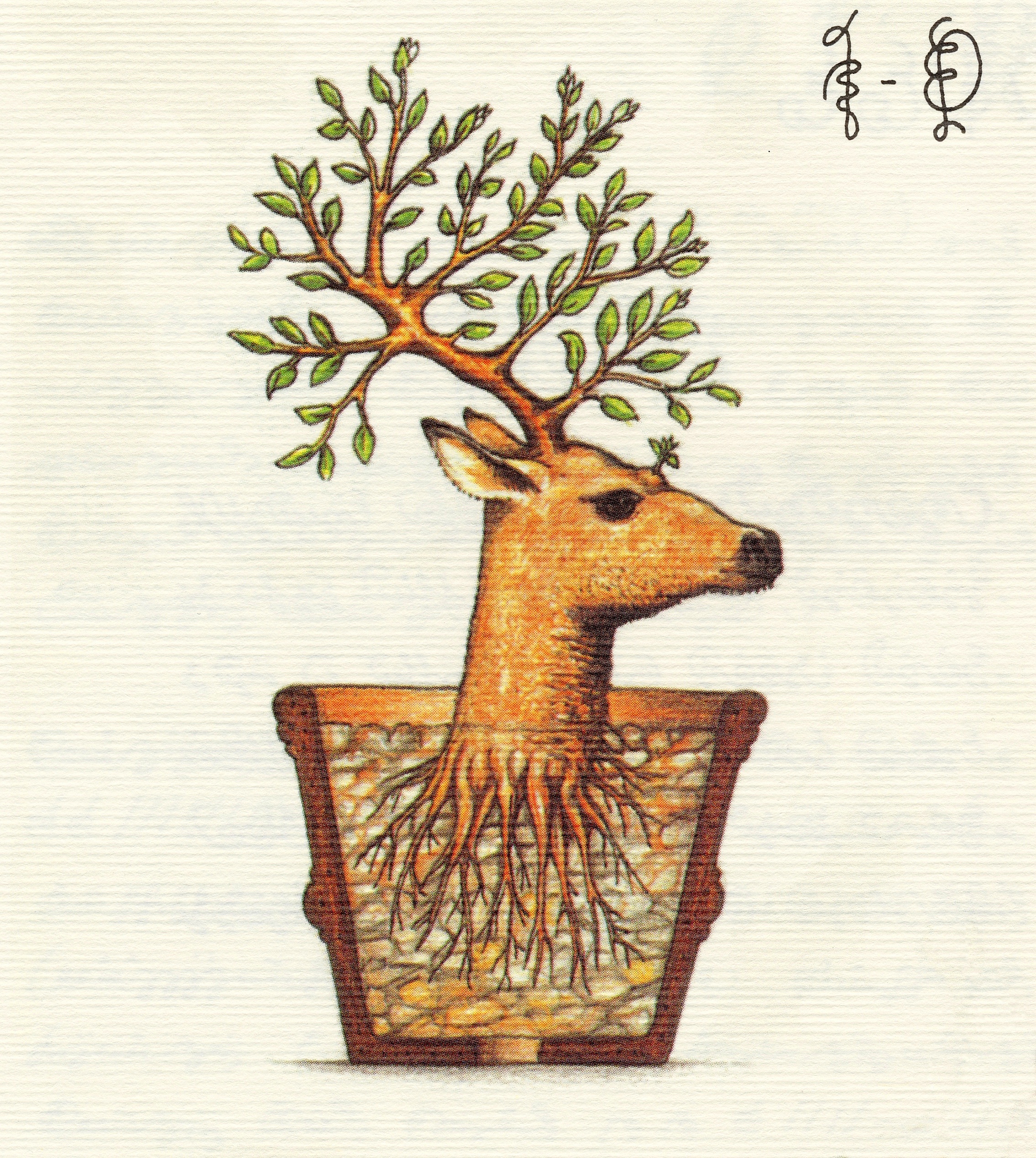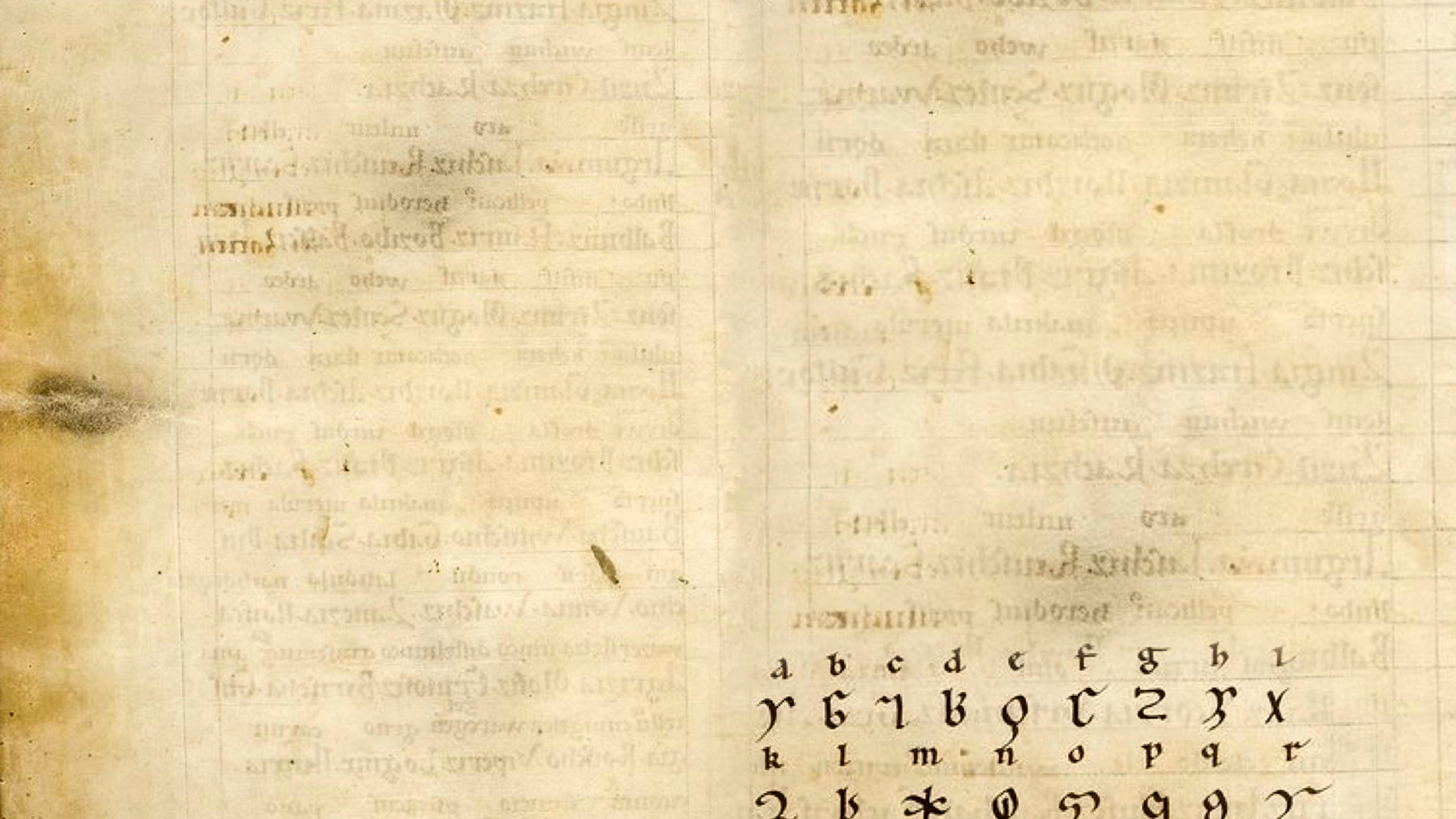 The answer to this stanza riddle is the word eolhx, meaning unclear. We know this is the name of the rune because this word appears in the only copy we have of the Rune Poem, printed in 1705 from the only surviving manuscript copy, which burned to ashes in a fire 26 years later. Was the word eolhx included in the burnt manuscript? We’ll never know.
The answer to this stanza riddle is the word eolhx, meaning unclear. We know this is the name of the rune because this word appears in the only copy we have of the Rune Poem, printed in 1705 from the only surviving manuscript copy, which burned to ashes in a fire 26 years later. Was the word eolhx included in the burnt manuscript? We’ll never know.
Eolhx appears nowhere else in Old English writing, so whatever it means, we have no clues apart from its Rune Poem stanza riddle. What is this word eolhx? There are two compound words that begin with the same letters as eolhx, eolh, we can look at them: eolhsand (amber) and eolhstede (a shelter or a temple). Sand means sand or gravel and stede is a place, a site for something, or to stand, a stand. Eolh must be something valuable; amber was very valuable all over Europe and a good shelter is to be prized, a temple revered. Perhaps this eolhx plant was important.
We know this is a plant, and the plant is a sedge, the stanza says so. Most translators want to call it an elk sedge because elh, elch, elha, and eola all mean elk. The idea behind this is that eolhx might mean elk in the genitive singular form: of the elk. This might be the elk’s plant, maybe as food or bedding, though the stanza says it is sharp and grows in the fen and why an elk would sleep on a prickly plant in a swamp makes little sense, but who knows why an elk does what it does. That’s the elk’s business. The real problem with this argument is that genitive singular would make the word look more like elhes or eoles, no X. Never an X. But we need this X, this is the rune for the letter X, which ends very few Old English words, begins none of them, and has nothing to do with any word for elk. I am not buying the elk as the best translation, though I can see that the plant eating elk might enjoy a good marsh sedge. Or maybe this sedge has stems that look like antlers resembling an elk? We don’t know.
Did the rune carvers know the elk? Elk were gone from Britain, extinct long before the Rune Poem, though that wouldn’t stop it from being represented in a stanza. Look at the aurochs, also long extinct before the Rune Poem yet standing right here with the rest of the runes. Don’t stand next to an aurochs. The rune carvers prized the aurochs for its horns as the most ancient of treasures, the best kind, and for its general badassery, but there is no such reverence for the elk in the culture, which gets only a few rare mentions. Why should an animal not particularly revered or important to the rune carvers get a stanza in the Rune Poem?
I don’t think this eolhx means elk, but it is not the nature of the elk or its position in society that makes me reject the poor animal as the stanza name. The elk is fine, let it graze on whatever it likes and sleep where it wants. It is the position of the stanza itself and the existence of a better candidate for the solution to this riddle that convinces me. Eolhx stands alone in the middle with all the others pairing up thematically on either side of it, spiraling around each other from the center until both ends meet at the beginning and end. Eolhx is the switchback of the poem, where the path through it turns and winds back the other way. I think eolhx means helix, a Latin plant name like so many others, borrowed into the language from the Romans who were right there. In classical Latin, helix means a kind of willow, a kind of ivy, a whorled shape, and the spiral shaped decorations on Corinthian columns. In lists of rune names found in Old English manuscripts, this rune is called elux, ilcs, iolx, ilx, ilcs, and ilix. None of these words appear anywhere else in Old English manuscripts besides in these alphabet lists, nor do they mean anything in Old English, beyond being the name for this rune. However, as close homophones, they may well be variant spellings of the Latin word helix. I think we might be all turned around on the subject if we think this rune means elk or as some have it, elk sedge as a compound word.
If you must have compound word like elk sedge as the answer to this riddle, and no other rune name consists of only half of a compound word so I don’t know why you would want that, then go for helix sedge and leave the elk in peace. Look at a sedge up close, watch those sharp edges, and you’ll see the sense in it. Sedge leaves grow in a spiral pattern around the stem. The helix is built right in: it is the perfect symbol for a poem that winds around itself, creating matched pairs starting on either side of this center point, the middle of the spiral. This rune’s stanza is the turning place that twists the Rune Poem into a unicursal labyrinth, coiling back along a self similar path through ideas of fate and prosperity and light and trust and the water cycle, all the way back to the beginning that is also the end which tells us this: though the rune pairs sing of what is most important, everything, all of it, is temporary.


